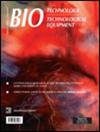Light filtration technology for sustainable microalgal biomass production
IF 1.4
4区 生物学
Q4 BIOTECHNOLOGY & APPLIED MICROBIOLOGY
引用次数: 0
Abstract
Abstract The use of native microalgal strains, which are well adapted to local environmental conditions, for sustainable biofuels production has largely been marred by photonics-related challenges. To date, most photobioreactor systems make use of artificial sources of illumination thus increasing the overall costs of biomass production. Solar energy, although sustainable and cost-effective, is difficult to manage and control. It also contains other wavelengths which are detrimental to microalgae. Thus, this study sought to make use of spectral filters for optimal outdoor algaculture. Hence, solar energy was used in wastewater-mediated algaculture of native and imported Chlorella sp. under blue, green, red and yellow coloured spectral filters. The native Chlorella sp. had the highest growth rate of 0.892 d−1 and 0.754 d−1 under green and blue coloured filters, respectively. In comparison, the imported Chlorella strain had a growth rate of 0.379 d−1 and 0.267 d−1 under green and blue filters, respectively. Both strains produced high lipid yields under the blue coloured filter, with the native and imported Chlorella strains managing lipid yields of 41.87% dry cell weight (dcw) and 32.29% dcw, respectively. The native Chlorella strain also significantly lowered (p < 0.05) the levels of total nitrogen and ammonium from wastewater with removal efficiencies of 92.17% and 44.60%, respectively, whereas the imported Chlorella strain managed a removal efficiency of 80.81% total nitrogen and 26.10% ammonium under the blue coloured filter. The results indicate that light filtration technology can be used, sustainably, in the simultaneous algaculture of native strains and remediation of wastewater.可持续微藻生物量生产的光过滤技术
摘要当地微藻菌株非常适合当地环境条件,用于可持续生物燃料生产在很大程度上受到了光子学相关挑战的破坏。迄今为止,大多数光生物反应器系统使用人工照明源,从而增加了生物质生产的总成本。太阳能虽然具有可持续性和成本效益,但难以管理和控制。它还含有对微藻有害的其他波长。因此,本研究试图利用光谱滤波器进行最佳的户外藻类培养。因此,在蓝色、绿色、红色和黄色光谱滤光片下,太阳能被用于本地和进口小球藻的废水介导的藻类培养。在绿色和蓝色滤镜下,本地小球藻的生长速率最高,分别为0.892 d−1和0.754 d−1。相比之下,进口小球藻菌株在绿色和蓝色滤镜下的生长率分别为0.379 d−1和0.267 d−1。这两种菌株在蓝色滤镜下都产生了高的脂质产量,本土和进口小球藻菌株的脂质产量分别为41.87%干细胞重量(dcw)和32.29%干细胞重量。天然小球藻菌株也显著降低(p < 0.05)废水中的总氮和铵的去除率分别为92.17%和44.60%,而进口小球藻菌株在蓝色过滤器下的总氮去除率为80.81%,铵去除率为26.10%。结果表明,光过滤技术可以可持续地用于本地菌株的同时藻类培养和废水的修复。
本文章由计算机程序翻译,如有差异,请以英文原文为准。
求助全文
约1分钟内获得全文
求助全文
来源期刊

Biotechnology & Biotechnological Equipment
工程技术-生物工程与应用微生物
CiteScore
3.10
自引率
0.00%
发文量
90
审稿时长
1 months
期刊介绍:
Biotechnology & Biotechnological Equipment (B&BE) is an international open access journal publishing cutting-edge research. A modern world requires modern biotechnology and nanobiology. The journal is a forum that provides society with valuable information for a healthy and better life and promotes “the Science and Culture of Nature”.
The journal publishes original research and reviews with a multidisciplinary perspective; expanded case reports with a focus on molecular medical research and advanced practice in evidence-based medicine are also considered.
 求助内容:
求助内容: 应助结果提醒方式:
应助结果提醒方式:


